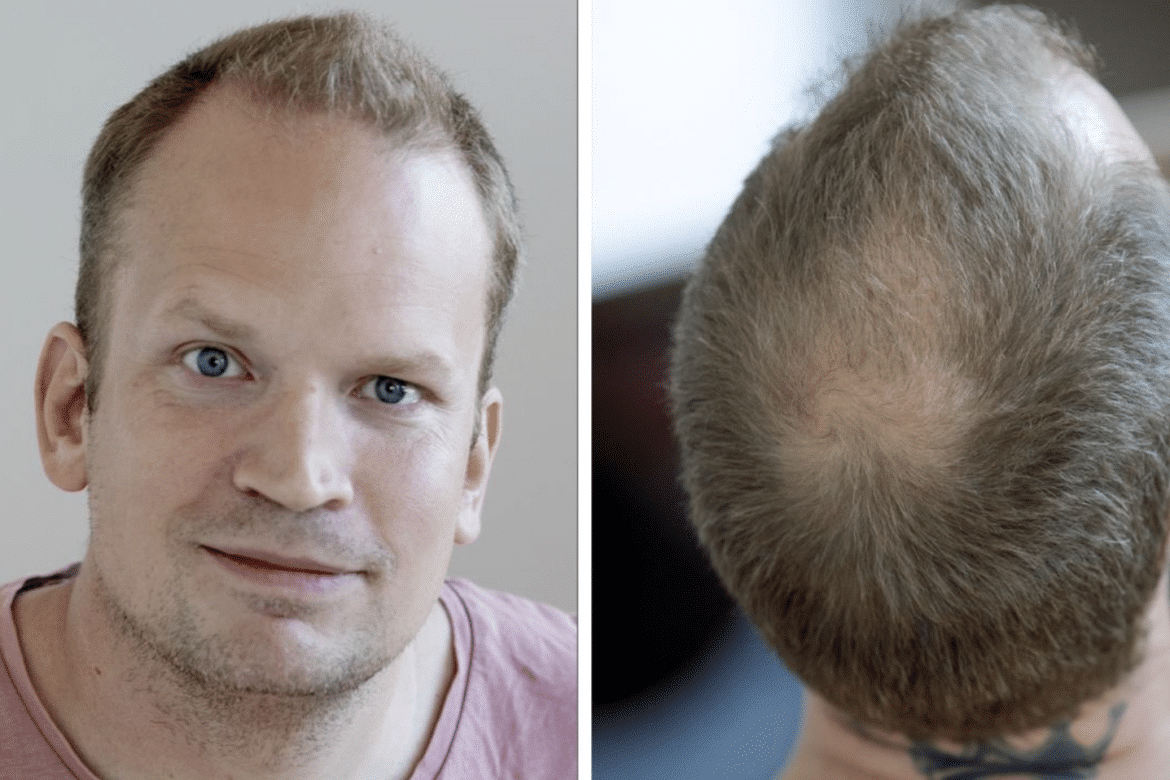To diagnose hair loss requires a careful evaluation of the patient's medical history and a physical examination of the scalp. At our practice, we use advanced diagnostic tools to assess hair loss patterns and identify underlying causes.
Trichoscopy
Trichoscopy is a non-invasive technique that uses a dermatoscope to magnify and analyse the scalp. This helps us identify specific hair diseases and assess the condition of hair follicles.
Blood samples
We also perform blood tests to rule out medical conditions that may cause hair loss, such as hormonal imbalances or nutritional deficiencies.
Treatment options
There are several effective treatment options available for hair loss, depending on its cause and severity.
Medical Treatments
- Minoxidil: A topical solution that promotes hair growth and prevents further hair loss.
- Finasteride: An oral medicine used to treat male pattern hair loss by inhibiting the production of dihydrotestosterone (DHT).
- Corticosteroids: Used to treat inflammatory hair diseases.
Surgical Treatments
- Hair transplant: A procedure in which healthy hair follicles are transplanted from one area of the scalp to the affected area.
- FUE (Follicular Unit Extraction): A modern technique where individual hair follicles are extracted and implanted.
Natural and Complementary Therapies
- Laser therapy: Use of low-intensity laser light to stimulate hair growth.
- Acupuncture and Massage: May improve blood circulation to the scalp and promote healthy hair growth.
- Food supplements: Vitamins and minerals such as biotin, zinc and iron can support hair health.
Expectations when visiting a hair loss clinic
When you visit our hair loss clinic, you can expect a thorough evaluation and a customised treatment plan. Our experts will work closely with you to identify the most effective solution for your specific hair loss case.
First Consultation
During your first visit, we will conduct a detailed examination of your scalp and discuss your symptoms and expectations. Based on our evaluation, we will recommend appropriate tests and treatments.
Monitoring and Maintenance
After a treatment plan has been initiated, regular follow-up visits will ensure that treatment is effective and adjusted if necessary. Maintenance treatments may also be recommended to prevent future hair loss.
Advances and Innovations in Hair Loss Treatment
Research in hair loss treatment is constantly evolving, and new methods are regularly tested to improve the effectiveness and safety of treatments.
Stem cell research
Stem cell research shows promising potential for future hair restoration therapies by using stem cells to regenerate hair follicles.
Genetic Treatments
Genetic research aims to understand the specific genes involved in hair loss and develop targeted treatments that can block the negative effects.
Personalised Medication
Personalised medication, based on an individual's genetic profile, is becoming increasingly relevant in hair loss treatment and may soon offer tailor-made solutions.
Executive summary
Hair loss can be a challenging and emotionally draining experience, but with the right diagnosis and treatment plan, many individuals can regain both hair and self-esteem. Our practice offers a comprehensive and personalised approach to hair loss treatment, using the latest technology and science. Whether it's through medical treatment, surgical procedures or natural therapies, we are here to help you find the best solution for your needs.
We encourage you to book a consultation with our experts to take the first step towards healthier hair and a happier you.






